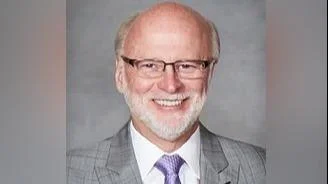Creating a culture of Ready Bystanders | https://carle.org/
Creating a culture of Ready Bystanders | https://carle.org/
Creating a culture of Ready Bystanders
Are you a ready bystander? Wondering what that even means. For victims of sudden cardiac arrest (SCA), it often means the chance for life over death. If you’re a ready bystander, you’re prepared to quickly provide life-saving resuscitation to individuals experiencing sudden cardiac arrest in non-medical settings. Without quick action to revive the heart, a person can suffer permanent brain damage or even die within as little as 10 minutes.
A Heart Disease and Stroke Statistics Update for 2023 from the American Heart Association notes that in 2021, non-medical people in the United States initiated cardiopulmonary resuscitation (CPR) in 40.2% of out-of-hospital cardiac arrests. So why aren’t more people ready bystanders when we know that CPR can double or triple the chances of survival after cardiac arrest?
“Fear. People may hesitate to perform CPR because they are afraid of doing something wrong,” Kevin Kennel, cardiovascular excellence coordinator at Carle BroMenn Medical Center says. “But even if aid is given by a person with no formal training, he or she can’t make someone worse than they already are and Good Samaritan Laws protect those acting in good faith from lawsuits.”
CPR training and certification boosts confidence and is strongly encouraged for older children and adults but if someone were to collapse most people have a basic understanding of CPR and can take action. CPR circulates oxygenated blood throughout the body when the heart has stopped beating to keep organs alive until medical personnel arrives. It is critical when someone shows no signs of life or is unconscious, unresponsive, not breathing or not breathing normally.
“Hands-only CPR consists of just two steps,” Kennel states. “First, call 911 or designate someone else to call, and second, press hard and fast in the center of the chest until the victim begins breathing or trained medical responders arrive and take over.”
Some people hum the tune Stayin’ Alive by the Bee Gees or Dancing Queen by ABBA to keep the target tempo of 100 to 120 chest compressions per minute. Whatever tune helps you keep a rhythm remember to straighten your arms out and push firmly with both hands together approximately 2 inches into the chest, allowing it to come back to its normal position after each push.
An Automated External Defibrillator (AED) is another life-saving tool that has become more readily available. AEDs are safe and easy to use and can shock the heart back into a normal rhythm. Once activated, voice commands and pictures tell and show you everything you need to do and the device won’t deliver a shock unless it detects the heart still has enough activity to respond to a defibrillator shock. CPR together with the use of an AED offers the best chances of survival from SCA.
In fact, due to the added benefit of an AED’s ability to deliver the jolt of life that hands-only CPR cannot, Carle BroMenn Medical Center is awarding a grant for the purchase of an AED to a local, qualified organization. Any organization interested in obtaining an AED but cannot afford to purchase one should contact Kevin Kennel at (309) 268-3543 for more information. “We need to have AEDS where they are publically accessible and easy for people to locate in an emergency,” Kennel explains. “They are another tool bystanders can use along with CPR to help individuals hang on until emergency medical personnel arrive.”
Becoming a ready bystander might seem a little scary but it isn’t difficult and it’s worth it. Every minute a person goes without CPR, their chance of making a full recovery decreases by about 10%. Bystanders can save lives by recognizing the importance of starting the chain of survival – calling 911, starting CPR, using an AED if one is available.
Build on this basic knowledge about performing hands-only CPR by signing up for more comprehensive CPR and First Aid training in your community. Classes are frequently offered throughout the Carle Health system, information is on the Carle website. The next community First Aid, CPR/AED slated in Bloomington-Normal at the Carle Health & Fitness Center on Feb. 15 from 6 - 9:15 p.m. Virtual Heartsaver training is also available by the American Red Cross. Contact the Red Cross for details.
Original source can be found here





 Alerts Sign-up
Alerts Sign-up